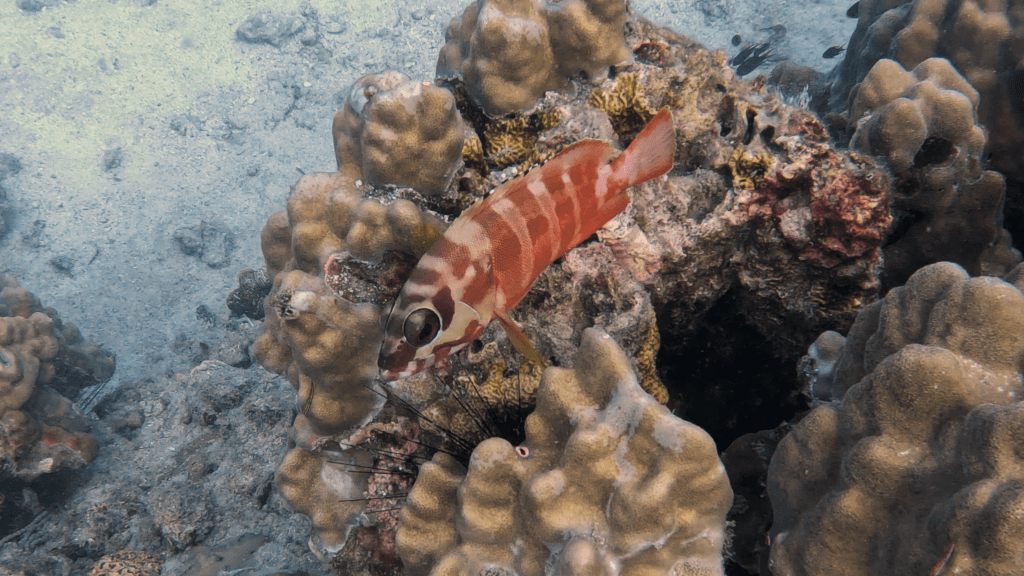Blacktip grouper
Blacktip grouper
These small groupers are sometimes yellowish-red or brick-colored without vertical bars, but more often they have 5 broad dark vertical bars on their body, which are more distinct near the base of the dorsal fin.
A distinctive feature of these groupers is the noticeable black triangular spots behind the tip of each dorsal fin spine. The eyes have a narrow black ring around them.
This species may exhibit simultaneous hermaphroditism in smaller individuals, while larger individuals typically lose female function.
The Blacktip grouper (Epinephelus fasciatus) has a wide Indo-Pacific distribution. Its range extends from the Red Sea to the Eastern Cape in South Africa, east to the Pitcairn Islands, north to southern Japan and Korea, and south to New Caledonia and Australia. It is found in Madagascar, the Mascarene Islands, Comoro Islands, and Seychelles in the Indian Ocean. In Australia, it occurs from the Houtman Abrolhos in Western Australia north along the tropical coast and south to Port Hacking in New South Wales. It can also be found on reefs in the Coral Sea, at Elizabeth Reef, around Lord Howe Island in the Tasman Sea, and at Christmas Island. A single record was reported in 2012 from the eastern Mediterranean, off Lebanon.
The Blacktip grouper feeds on crustaceans and small fishes by ambushing them. It inhabits coral reefs from depths of 4 m (usually from 15 m) down to 160 m, in both marine and brackish waters, sometimes occurring in groups of 10-15 individuals. Juveniles may find shelter in mangrove swamps.
